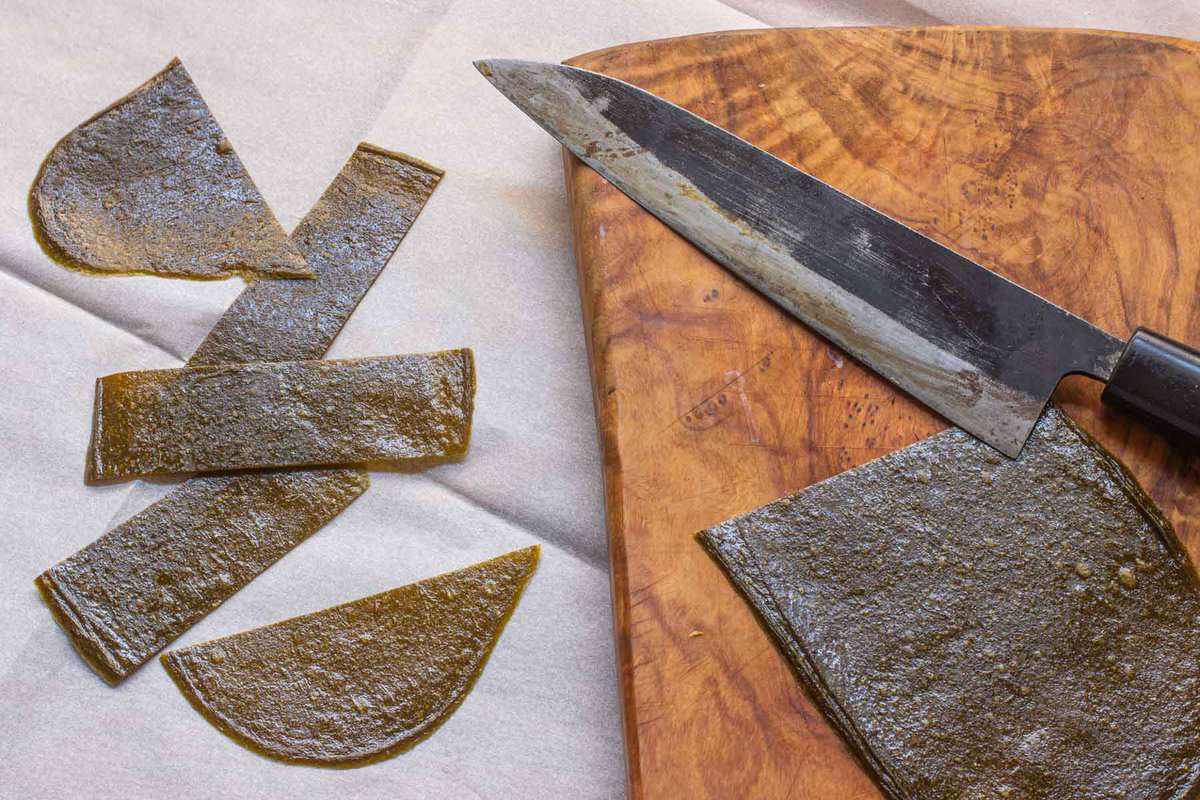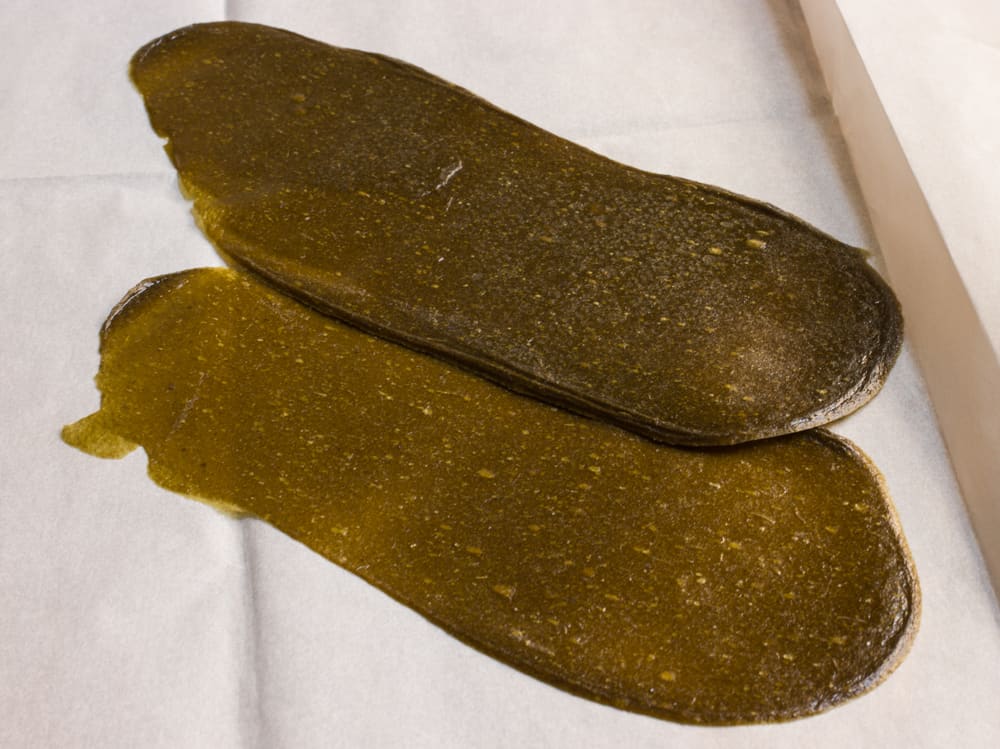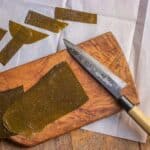Here's a fun twist on classic fruit leather using a basic puree of knotweed I mention in my post on Japanese Knotweed. It has a nice, slightly tight apple flavor and is one of the best knotweed recipes to serve to people who may not like the texture of the plant when cooked like rhubarb.
Lately my pastry chef has been cutting these into strips, tying them in knots, and serving them on the complimentary petit fours plate we serve at The Salt Cellar to finish each meal.

Knotweed Fruit Leather
Japanese Knotweed Fruit Leather, made from knotweed and apples. Makes enough for 6-8 people as a snack.
Servings: 10 Servings
Calories: 99kcal
Equipment
- 1 Blender
- 1 Dehydrator
Ingredients
- 3 lbs Japanese Knotweed
- 3 lbs baking apples like granny smith
- 2 tablespoons fresh wild peppermint leaves torn (optional, spearmint could be substituted)
Instructions
- Peel the fruit. Chop the knotweed and fruit into 1 inch pieces. Put the apples and knotweed into a deep sided pan and cook on medium heat, stirring occasionally. Cook the fruit and knotweed until completely soft and the knotweed has given up it's juice, about 20 minutes. If the mixture looks very watery, reduce a bit longer. Transfer to a blender, add the mint leaves and puree until as smooth as possible. You should be left with a thick, smooth puree.
- On a nonstick baking sheet, (silicon works like a dream) spread the knotweed puree with an off-set spatula until even and smooth, about ⅛ in is great. Now all you do is dry it completely and it's done, easy-peasy.
- At the restaurant, I put the knotweed on silicon sheets and dry it in an oven turned off with the fan still running, which takes just a few hours. At home, you could put the silicon sheets in a dehydrator, or for an old school approach, place the fruit puree in the sun with a fan on it too. Drying slow in an oven on the warm setting would work fine too.
- The knotweed is done when it's completely dried, it should still be somewhat pliable when bent. Store the knotweed in a labeled, airtight container, it will keep, unrefrigerated for a long time.
Notes
Equal parts knotweed and fruit, cooked and pureed, then spread thin and dried. I'm use a highspeed vita-mix blender for this, if you have a regular blender, you might need to add a little more water to get it to be perfectly smooth. I added apples as a natural sweetener, pears would also be great. This can also be made with only knotweed, but you will want to sweeten it somehow or it will be brittle.
Nutrition
Calories: 99kcal | Carbohydrates: 25g | Protein: 2g | Fat: 1g | Saturated Fat: 0.1g | Polyunsaturated Fat: 0.2g | Monounsaturated Fat: 0.1g | Sodium: 7mg | Potassium: 538mg | Fiber: 6g | Sugar: 16g | Vitamin A: 212IU | Vitamin C: 17mg | Calcium: 125mg | Iron: 0.5mg



suzanne sayer
DON"T ever harvest the Knotweed when its raining. Oh my goodness. I've gone through a stack of towels to dry them off and get the dirt off them. Its terrible!
I made lacto fermented pickles.
When you make the leather, do you add water to the apples so that they cook? I don't think the knotweed needs water if you picked it in the rain.
Also can I pick it one day and use it 2-3 days later? I picked it in the rain. dried it off and want to use it the day after I picked it
Alan Bergo
Yes I bet that was a little slimy. It’s fine to let them sit in the fridge for a few days before cooking.
Vallley Girl
I'm wondering, do you know if Japanese knotweed rhizomes are edible? The roots? I like to imagine that we might eat our way through this brutally invasive species. I'm concerned about the "pinching off" effect of harvesting each shoot, which would result in 2 or more stems sprouting from the remaining stem/rhizome.
Alan Bergo
I can't speak to the rhizomes, sorry.
Zoran Tasovac
I tried this and result was all small island of material with holes and cracks. Do you maybe know what can go wrong?
I used my Escalibur drier on the 145F setting.
Alan Bergo
That sounds like there was too much water in the puree, or the puree was not fine enough. I would try cooking it down a bit more before dehydrating.
Maddy
Thanks! Thanks! Until Spring 2017